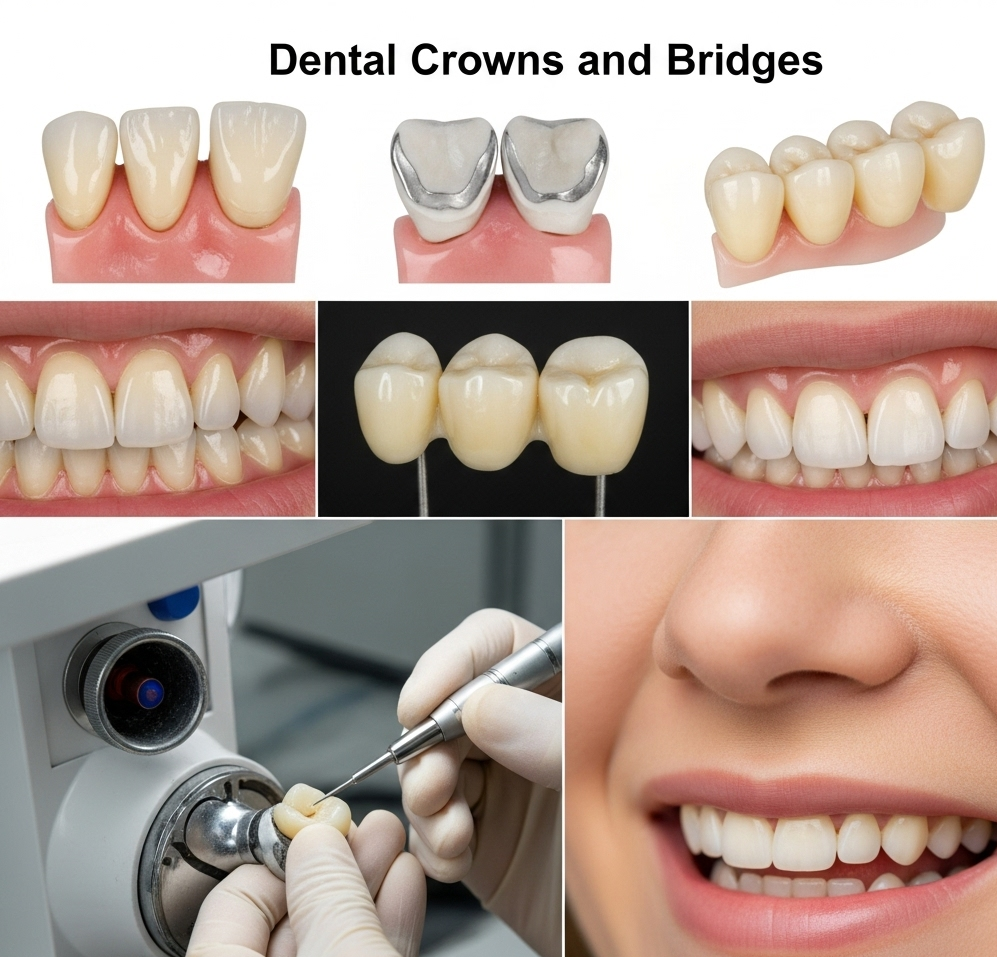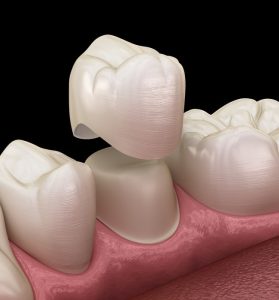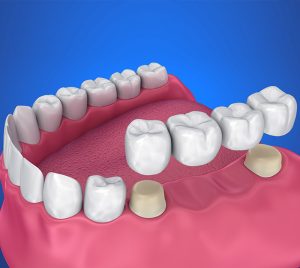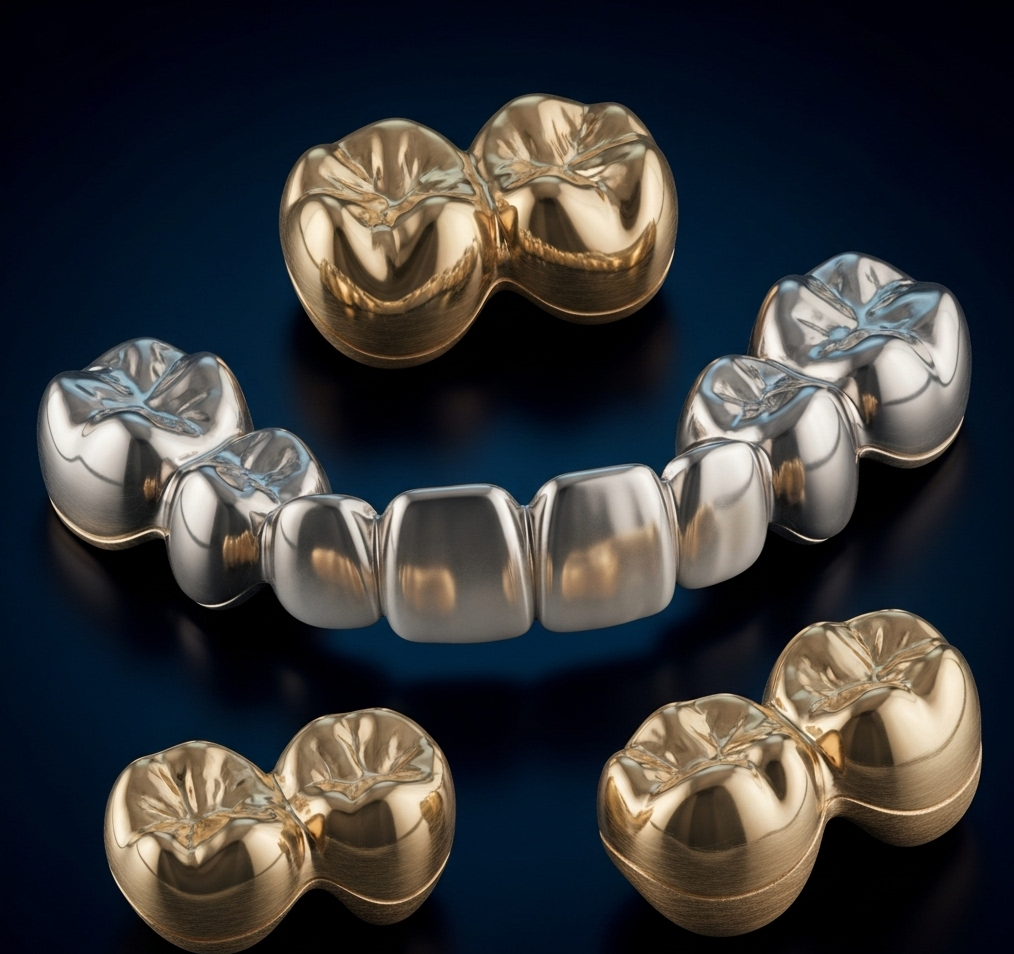Introduction
Dental crowns for teeth vs bridges—which is right for you? When teeth get damaged or fall out, these two restorative options are among the most effective solutions to restore function and appearance. Many patients choose dental crowns and bridges to improve both function and appearance. Both help restore your smile and keep your mouth healthy. But how do you decide which is best? New materials and techniques keep making these options better. This article compares dental crowns vs bridges, shows when each works best, and helps you understand your choices.
Understanding the Difference Between Dental Crowns and Bridges
What Are Dental Crowns?
A dental crown is like a cap that covers a damaged or weak tooth. The crown fits over the tooth, making it stronger. It also looks like a real tooth. Crowns are made from different materials, such as porcelain, ceramic, metal, or a mix called porcelain-fused-to-metal (PFM). Learn more about crowns for teeth available at our Vancouver dental clinic and explore how they can restore strength and beauty to your smile. Usually, you get a crown when your tooth is heavily filled or cracked. The process involves preparing the tooth, taking impressions, and then fitting the crown during a later visit.
What Are Dental Bridges?
A dental bridge is made to replace one or more missing teeth. It connects artificial teeth, called pontics, to your natural teeth or implants. Bridges come in different types: traditional, cantilever, and Maryland. The traditional bridge uses crowns on the teeth on each side of the gap. Maryland bridges use a metal or porcelain framework bonded to the back of neighboring teeth. Materials used are similar to crowns, often porcelain or ceramic. Placing a bridge requires preparing the neighboring teeth to hold the pontic.
Key Differences Between Crowns and Bridges
| Feature | Crowns | Bridges |
| Purpose | Cover and protect damaged teeth | Replace missing teeth |
| Structure | Fully covers a single tooth | Connects artificial tooth to adjacent teeth |
| Impact | Reinforces damaged teeth | Maintains space for missing teeth |
| Use | Restoring or covering a tooth | Filling gaps from missing teeth |
Factors Influencing the Choice Between Crowns and Bridges
Tooth Condition and Location
Damaged teeth that are broken or decayed benefit from crowns. The front teeth often need crowns for aesthetic looks. Molars may get crowns for strength. Bridges work well when a tooth is missing and nearby teeth are healthy enough to support the artificial tooth.
Patient Oral Health and Habits
Healthy gums and bone support both options. But if you have gum disease, a bridge may not be a good idea until your gums are healthy. Patients who grind their teeth (bruxism) might wear down crowns faster but can still use them if properly protected.
Cost and Insurance Coverage
When comparing dental crown vs bridge cost, crowns are generally less expensive per tooth. However, bridges—while requiring more components—may offer better value when replacing multiple adjacent teeth. Insurance often covers a portion of both treatments, but the exact coverage depends on your individual plan.
Longevity and Maintenance
Patients often ask, which lasts longer, a crown or bridge? With good care, crowns may last slightly longer than bridges.Crowns last about 10 to 15 years with good care. Bridges tend to last around 7 to 10 years, sometimes longer if well-maintained. Both need regular brushing, flossing, and professional checkups to stay healthy.
Aesthetic Considerations
Crowns can be matched to your natural tooth color for a seamless look. Bridges also look natural, especially if made with porcelain. Your dentist can help you pick the best material to match your smile.
When Are Crowns for Teeth the Best Choice?
Restoring Damaged or Decayed Teeth
If your tooth is cracked or has large fillings, crowns for teeth are often the most effective solution for restoring strength and preventing further damage. If you’re fixing broken teeth with a crown or bridge, the right choice depends on the severity of damage and whether the tooth root is still healthy
Protecting Weak Teeth
Teeth that are weak or fractured can break easily. Crowns hold these teeth together and keep them functional. This is common before and after root canals.
Aesthetic Improvements
Crowns are a good option if you want to improve the look of discolored or misshapen teeth. Porcelain crowns blend in well with your natural teeth.
Supporting Dental Implants
Crowns are often used as the final piece on dental implants. Crowns are often used as the final piece on dental implants. Explore crown-supported dental implants to see how they can restore both aesthetics and function. Once the implant is placed, a crown makes it look and function like a real tooth.
When Are Bridges the Better Option?
Replacing a Missing Tooth
If you’re missing teeth and wondering whether to go with crowns or bridges for missing teeth, your dentist can guide you based on tooth position, gum health, and cost.
Multiple Adjacent Missing Teeth
When several teeth in a row are missing, bridges are a good choice. They prevent neighboring teeth from moving and don’t require surgery like implants.
Cost-Effective Tooth Replacement
Compared to implants, bridges can be easier on your wallet. They usually cost less upfront and can last many years.
When Dental Implants Are Not Suitable
If you don’t have enough bone strength or health issues prevent surgery, a bridge offers a good alternative. It avoids the need for surgery and healing time.
Expert Insights and Case Studies
Leading dentists agree: choosing between crowns and bridges depends on individual needs. For example, a crown is perfect for a cracked front tooth, while a bridge is ideal for replacing a molar lost years ago. Recent studies show crowns last longer when properly maintained. Bridges work well for their purpose but may need replacement sooner if not cared for.
Actionable Tips for Patients
- Prepare for procedures by following your dentist’s advice.
- Ask questions: How long will it last? Will it match my teeth? What care is needed?
- Keep your crowns and bridges clean by brushing twice daily and flossing carefully.
- Avoid hard foods or habits that could damage your restoration.
- Visit your dentist regularly for checkups and cleanings.
Conclusion
Both dental crowns and bridges serve important roles in restoring your smile. Whether you’re restoring your smile with a dental bridge or crown, both treatments offer reliable, long-term solutions. Crowns for teeth are great for protecting damaged teeth and improving aesthetics, while bridges are ideal for replacing missing teeth and maintaining your bite. The best choice depends on your oral health, needs, and budget. Always consult a qualified dentist. They can help develop a plan tailored to your goals and condition. Your smile is worth investing in—make sure you pick the right option for long-lasting results.



